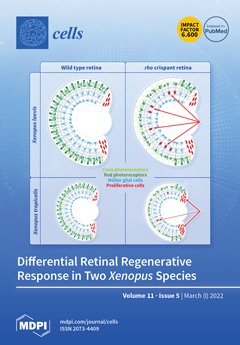KCNQ2 mutations can cause benign familial neonatal convulsions (BFNCs), epileptic encephalopathy (EE), and mild-to-profound neurodevelopmental disabilities. Mutations in the
KCNQ2 selectivity filter (SF) are critical to neurodevelopmental outcomes. Three patients with neonatal EE carry de novo heterozygous
KCNQ2 p.Thr287Ile, p.Gly281Glu and p.Pro285Thr, and
[...] Read more.
KCNQ2 mutations can cause benign familial neonatal convulsions (BFNCs), epileptic encephalopathy (EE), and mild-to-profound neurodevelopmental disabilities. Mutations in the
KCNQ2 selectivity filter (SF) are critical to neurodevelopmental outcomes. Three patients with neonatal EE carry de novo heterozygous
KCNQ2 p.Thr287Ile, p.Gly281Glu and p.Pro285Thr, and all are followed-up in our clinics. Whole-cell patch-clamp analysis with transfected mutations was performed. The Kv7.2 in three mutations demonstrated significant current changes in the homomeric-transfected cells. The conduction curves for V
1/2, the K slope, and currents in 3 mutations were lower than those for the wild type (WT). The p.Gly281Glu had a worse conductance than the p.Thr287Ile and p.Pro285Thr, the patient compatible with p.Gly281Glu had a worse clinical outcome than patients with p.Thr287Ile and p.Pro285Thr. The p.Gly281Glu had more amino acid weight changes than the p.Gly281Glu and p.Pro285Thr. Among 5 BFNCs and 23 EE from mutations in the SF, the greater weight of the mutated protein compared with that of the WT was presumed to cause an obstacle to pore size, which is one of the most important factors in the phenotype and outcome. For the 35 mutations in the SF domain, using changes in amino acid weight between the WT and the
KCNQ2 mutations to predict EE resulted in 80.0% sensitivity and 80% specificity, a positive prediction rate of 96.0%, and a negative prediction rate of 40.0% (
p = 0.006, χ
2 (1,
n = 35) = 7.56; odds ratio 16.0, 95% confidence interval, 1.50 to 170.63). The findings suggest that p.Thr287Ile, p.Gly281Glu and p.Pro285Thr are pathogenic to
KCNQ2 EE. In mutations in SF, a mutated protein heavier than the WT is a factor in the Kv7.2 current and outcome.
Full article






